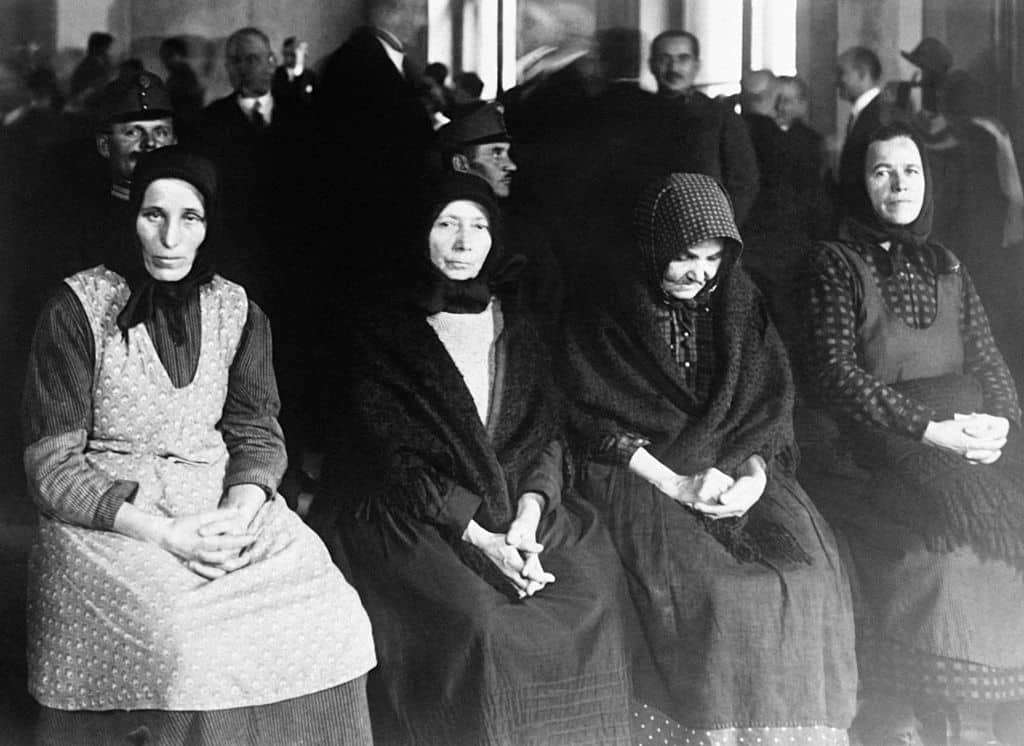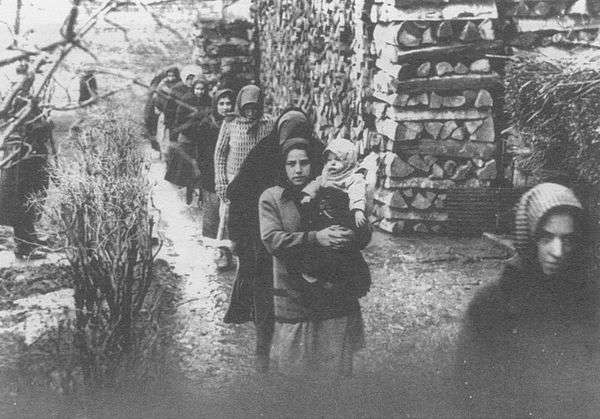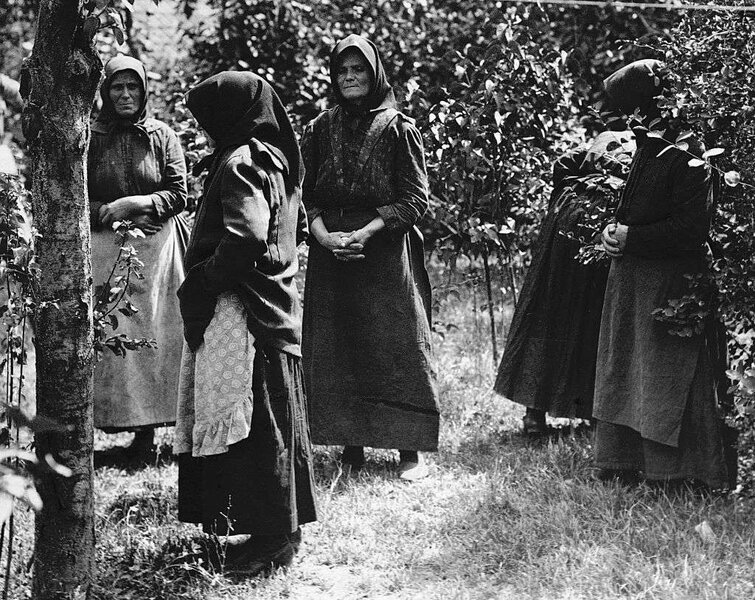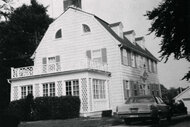Create a free profile to get unlimited access to exclusive videos, sweepstakes, and more!
The Angel Makers of Nagyrév and the truth around murderous women of myth

In central Hungary lies a village named Nagyrév. A farming town to the southeast of Budapest with a sparse location of around 800 people, Nagyrév was, like many small villages in the country during the early 1900s, a quiet and unobtrusive place. Its community was tightly bound and its amenities simple. What it lacked, however, was a resident doctor. For those who were sick or in desperate need of medical advice, their options were limited. That changed in 1911 when a woman named Zsuzsanna Fazekas came to town. Within 15 years, she would become one of Europe's most infamous woman, the self-styled leader of a group of women who were accused of murdering close to three hundred people by poisoning. They became known as The Angel Makers of Nagyrév.
When she arrived in Nagyrév, Zsuzsanna Fazekas raised a few eyebrows. She had a murky background, her husband had apparently gone missing under curious circumstances, and nobody knew where she had come from. She did, however, come with some solid references and prior experience as a midwife.
For many thousands of years, midwifery retained a level of power and respect in local communities that were often not typically awarded to women. In ancient Egypt, for example, midwifery was a widely recognized occupation of women, while during Roman times, it was a prized job for many enslaved or servile women, some of whom were trained as midwives as a means to earn their freedom. During the Medieval period, however, the tides firmly changed, and midwifery became associated with witchcraft. Many of the women accused of being witches by the church were midwives with medical knowledge and experience with natural remedies. Eventually, regulations became more commonplace for the job and, of course, men began to push women out of the field. Birthing became a job for doctors (men), not midwives. In smaller communities and regions with a lack of access to major medical care, however, midwives remained an important part of their way of life. Such women were also known as practitioners of abortions. Midwives were also agony aunts of sorts, knowledgeable figures who other women could turn to during their darkest times. Zsuzsanna Fazekas became such a woman to the people of Nagyrév.
Hungary of the 1910s was a place of political upheaval, crushing poverty, and no options for women. The country was hit greatly by the First World War, which had seen 9 million men of the Austro-Hungarian Empire drafted and resulted in a catastrophic number of deaths. Most marriages were arranged, with teenage girls paired off with older men chosen for them by their families. They didn't get a say in this and divorce was not yet legal, even in the cases of abusive marriages. So, for many women, as was the case in Nagyrév, they were left in loveless and fraught marriages with men who they were often afraid of, and that was before they were sent off to fight a war. They had no money, no support, and growing families to look after. They were not left completely without men, however, as Nagyrév become a holding camp for the Allied prisoners of war. Many of these men were sent to work in the farms left behind by the locals after they were drafted. Some became part of village life, to the point where they started romantic relationships with the married women. Some women took on three or four lovers at a time. This brief period of sexual liberation and a number of unwanted pregnancies, for which Fazekas would offer her services. Fazekas would eventually be arrested at least 10 times between 1911 to 1921 for performing illegal abortions, but each time, she was acquitted by sympathetic judges and able to return to her work in Nagyrév.
After the war, some of Nagyrév’s men returned to the village but were deeply changed by their experiences on the battlefront. PTSD was not yet an officially recognized condition, and many had suffered serious physical injuries that never properly healed. They had evolved from being providers to dependents, the polar opposite of what many of their wives had gone through after years of independence. The women, now feeling overburdened by their husbands, turned to Fazekas for advice. They were used to talking to her about their most personal problems, and when they lamented life with their returned husbands, Fazekas offered a unique remedy.
"If there's a problem with him, I have a simple solution."
Said solution was arsenic, made by boiling flypaper and skimming off the poisonous residue. For many centuries, arsenic was used medicinally and cosmetically for everything from syphilis to skin whitening. During the Victorian era, you could buy it as a cure for unsightly facial blemishes, but it's also been one of the most common methods of murder for millennia. Arsenic poisoning can occur organically through drinking tainted water sources and that proved enticing to murderers who wanted to disguise their crimes as a mere case of cholera because the symptoms were so similar (vomiting, abdominal pain, diarrhea, skin discoloration.) For the women of Nagyrév, a region with little to no infrastructure and no reliable water sources, arsenic poisoning seemed like the perfect crime.
Fazekas began secretly persuading women to poison their husbands, promising them that her arsenic solutions were untraceable in the body. She had also enlisted the help of one woman, Susi Oláh, to act as a clerk, filing death certificates that obscured the real cause of death. Oláh had poisoned her much older husband when she was 18 years old. Word spread fast among the community and soon the bodies began piling up. Husbands weren't the only ones to suffer. Soon, these women started killing off other dependent family members, including their parents and children. Fazekas allegedly told one woman, "Why put up with them?" There were an estimated 45–50 murders over the 18 years that Mrs. Fazekas lived there, to the point where Nagyrév earned the dubious nickname of "the murder district."
It's unclear how the so-called Angel Makers were eventually detected. One account claim that a medical student in a neighboring town found high arsenic levels in a body that washed up on the riverbank, leading to an investigation. Béla Bodó, a Hungarian-American historian, said that the murders were made public when an anonymous letter to a local newspaper accused the women of mass murder. Whatever the case, the authorities were driven to exhume dozens of bodies from the local cemetery, and they discovered that 46 of the 50 corpses dug up contained massive traces of arsenic.
When the police came to arrest Fazekas, she was already dead, having taken some of her own poison. 26 women eventually stood trial for the murders. Their motives were varied, and their crimes became the stuff of local myth. Some women claimed they were sick of their abusive spouses. Others wanted to get their hands on land owned by their families. Many said they had wanted to keep their lovers from wartime. It was remarked upon with shock at the time that these women often seemed unrepentant on the stand, even bored by the drama of the courtroom. They felt that they had done what they had to do, regardless of the monstrous nature of their misdeeds. Eventually, eight of the Angel Makers of Nagyrév were sentenced to death but only two were executed. 12 others received prison sentences.
Today, the story of Nagyrév is something of a local legend, a curious part of Hungarian history that no longer inspires the fear that it once did. It's possible, however, that these women were not alone in their murders. In the nearby town of Tiszakurt, other exhumed bodies were found to contain arsenic, but no-one was convicted of their deaths. In the 1950s, historian Ferenc Gyorgyev met an old villager while in prison under the communists who claimed that the local women "had been murdering their menfolk since time immemorial." In 2004, Maria Gunya, who had been a little girl when the Angel Makers made their mark on Nagyrév, told the BBC, rather slyly, that after the poisonings the men's behavior towards their wives "improved markedly."
















